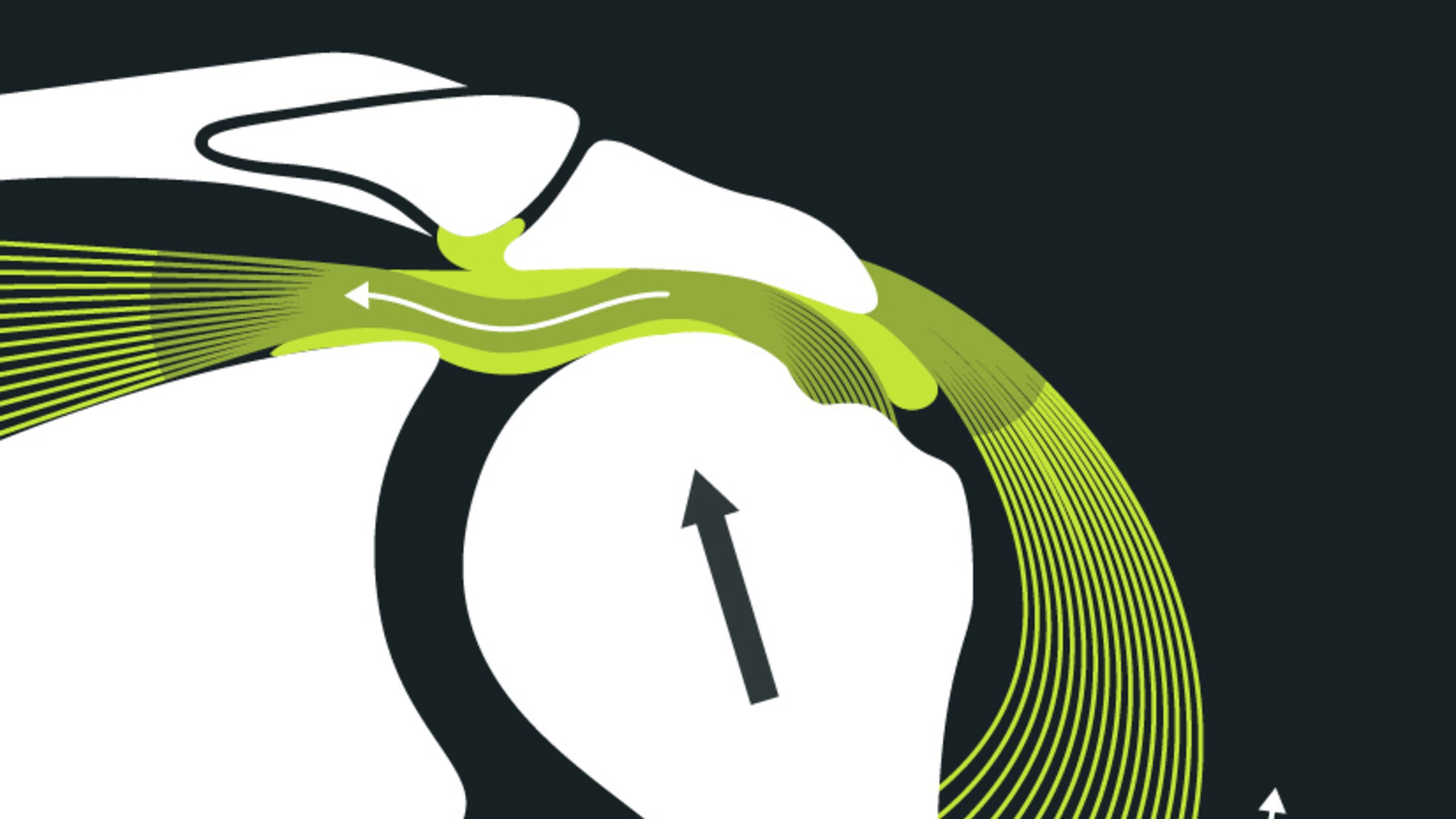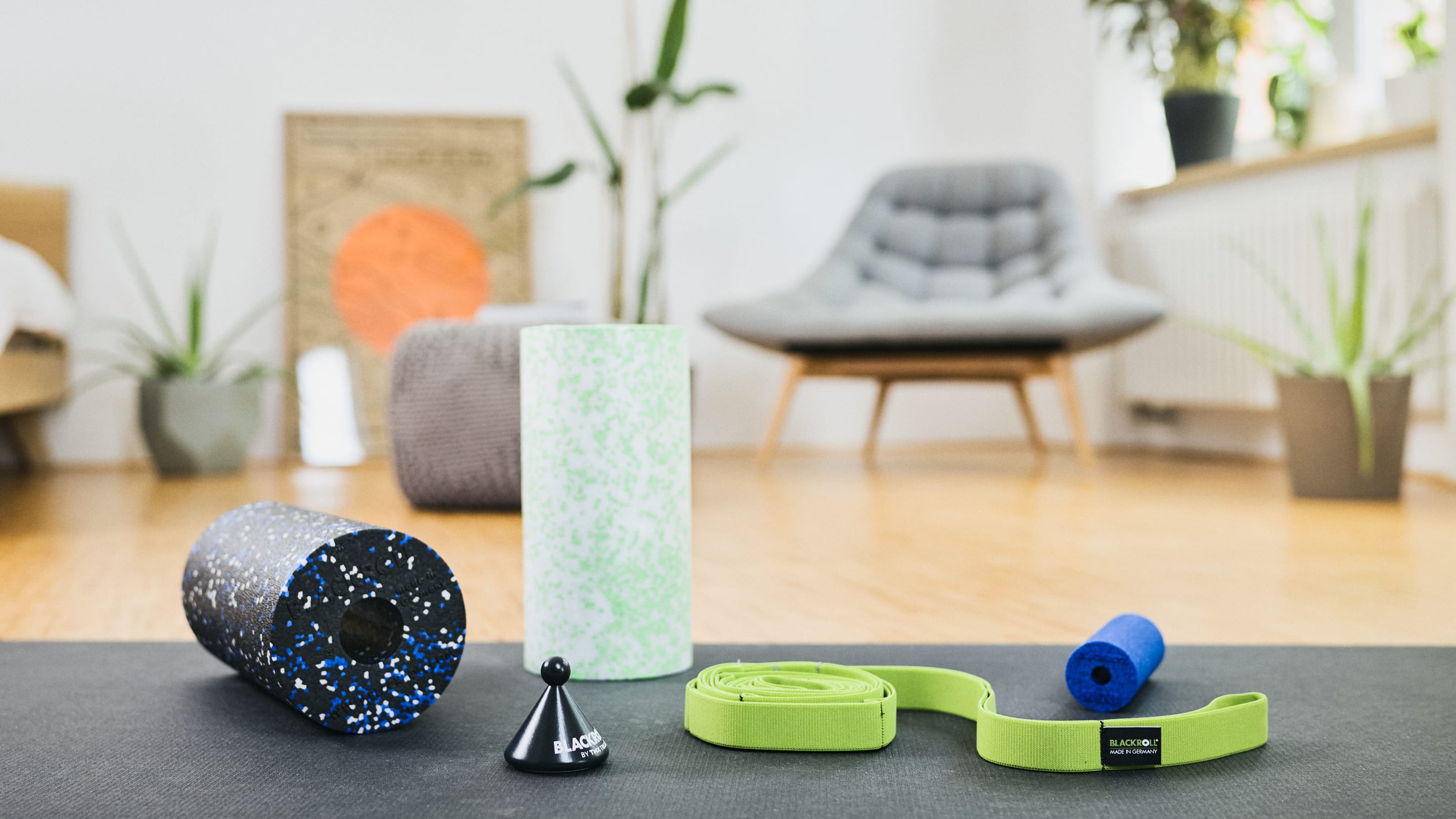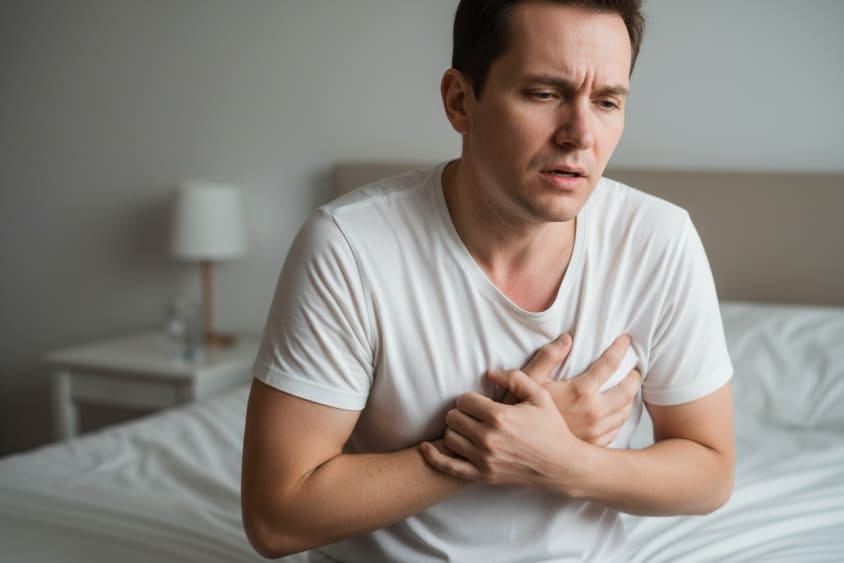
Impingement syndrome - Shoulder impingement syndrome

Do you have pain and limited movement in your shoulder joint? You might have impingement syndrome.
The shoulder joint is the most mobile ball-and-socket joint in the human body. But this also comes at a disadvantage: the shoulder is prone to injuries and wear. With impingement syndrome, various factors lead to painful restriction of your rotator cuff tendon (specifically, the supraspinatus tendon) between the top of your upper arm and the top of your shoulder (acromion). It is especially common in people who do a lot of work reaching overhead. Putting on a coat or lying on the affected shoulder can cause pain. Excessive strain, tissue changes from wear and tear, calcification and inflammation can all cause shoulder impingement. All of these factors involve abnormal muscle tension – that is, an imbalance in your muscular and fascial system. The good thing is that there are things you can do yourself to restore the balance and make your pain a thing of the past.
01. What is impingement syndrome?
The word impingement means to “collide” or “encroach upon”. As well as shoulder impingement, impingement of the hip can also occur. The rotator cuff is a group of muscles and tendons that connect your upper arm bone to your shoulder blade socket. The rotator cuff stabilizes your shoulders and enables you to rotate your upper arm inward and outward. With shoulder impingement syndrome, the area below the top of your shoulder becomes narrow. A fluid-filled sac called the bursa subacromialis along with the supraspinatus tendon get caught between the top of the shoulder (acromion) and the top of your upper arm (humerus).
02. What are the symptoms of impingement syndrome?
With impingement syndrome, your shoulder mobility becomes limited. You’ll especially notice this if you lift your arm at your side between 60° and 120°. At night, the pain might get worse if you sleep on the affected shoulder. The space below the top of your shoulder gets narrow, and that makes the simplest everyday movements agony:
- Pain when lifting or spreading your arm
- Pain when rotating your arm
- Discomfort that radiates to your upper arm or neck
- Pain when lying on the affected shoulder
- Restricted mobility in your shoulder joint
- Arm feels weak
- Unusual noises in the shoulder when raising your arm
You can do the Painful Arc Test to quickly work out whether you have shoulder impingement: stand up straight and let your arms hang down by your sides. Lift the arm of your affected shoulder up by your side, with your palms facing down. If you have impingement syndrome, you will feel pain at an angle of between 60° and 120°. This can provide an initial self-diagnosis.
In general, the discomfort you get with impingement syndrome appears over a long period of time and isn’t dangerous. But if you experience a sharp pain, significantly restricted movement, and/or sudden swelling and redness, we recommend a visit to your doctor. They’ll be able to diagnose your symptoms and start targeted treatment.
03. What causes shoulder impingement?
Impingement syndrome is often a sign of wear and tear. It mainly affects people who do a lot of work reaching overhead. Various sports can also make the problem more likely. The people who most commonly get shoulder impingement are:
- Painters
- Car mechanics
- Swimmers
- Tennis players
- Bodybuilders and weightlifters
- Volleyball players
- Badminton players
- Handball players
Wondering what sports you can do with impingement syndrome? Try to avoid doing the sports above until the pain goes away.
There are a wide variety of anatomical causes of impingement syndrome. Bone loss, inflamed bursa and tendons, or congenital factors can make impingement syndrome more likely, as can small fragments of calcium deposits. In any case, it results in narrowing between the top of the upper arm (humerus) and the top of the shoulder (acromion). It’s often caused by excessive pulling on the lateral shoulder muscle (deltoid muscle) that can’t be compensated for by other, weakened shoulder muscles. The narrowing causes your supraspinatus tendon to get caught. Sometimes, the pressure also irritates and inflames the fluid-filled sac in that part of your body (bursa subacromialis), which causes pain.
“Being able to move the shoulder joint without friction is an extremely complex task that requires all the structures involved, like muscles, fascia, tendons and ligaments, to work together. If too much demand is placed on this area, it can quickly lead to changes and then pain. By taking early countermeasures like doing the right muscle and fascia exercises, you can get impingement syndrome back under control.” Dr. Torsten Pfitzer, holistic pain therapist and health coach
04. What can help with shoulder impingement syndrome
Treatment for shoulder impingement depends very much on what specific form it takes. As a general rule, the earlier you start treatment, the more likely your symptoms will go away without surgery. When does an impingement require surgery? Usually, shoulder impingement surgery is unnecessary. Depending on the extent of the shoulder impingement syndrome, it may help if you can reduce the inflammation to start with. Then you can start the next part of the treatment. If you want to successfully treat impingement syndrome, you’ll need to incorporate the following into your everyday life:
- Myofascial techniques
SMT (self-myofascial treatment) exercises can ease tightness and adhesions (sticking) in your fascial tissue. These can get rid of tension from your shoulder – and help make the pain disappear. BLACKROLL® fascia products are ideal here. - Increase mobility in your shoulder girdle
Once you have relaxed your tissue, you can do exercises to increase your mobility. The aim is to create more space between the top of your upper arm and the top of your shoulder. - Activation
The physiotherapeutic approach involves strengthening surrounding muscles. Targeting the right parts of the rotator cuff to activate it can help alleviate the narrowing below the top of the shoulder.
Don’t let it get to that point – prevent shoulder impingement instead!
In order to prevent shoulder impingement syndrome, avoid the typical everyday movements where you reach above your head, and also avoid sleeping on the same shoulder with your arm stretched up under your head. Are you at more risk of shoulder impingement because of your job or the sports you do? Then prevent unpleasant shoulder pain with the following exercises.







